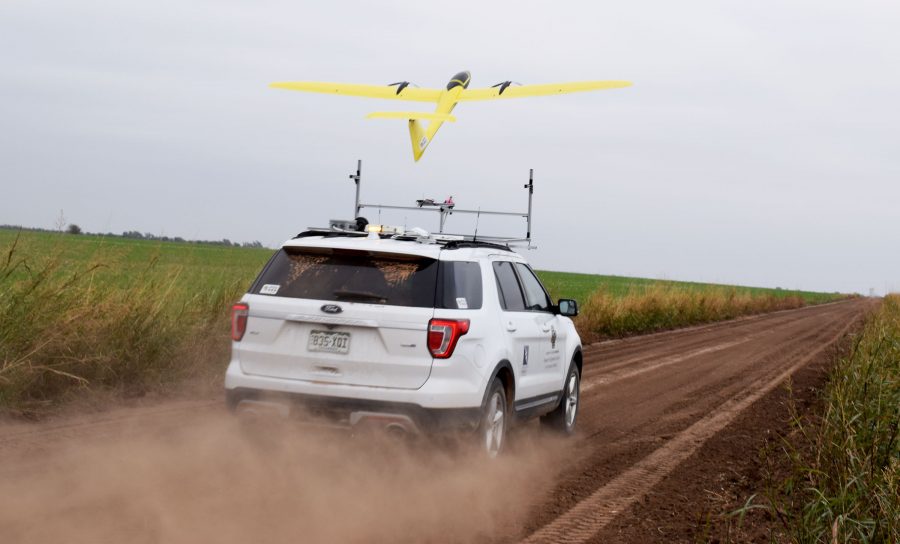Researchers test unmanned aircraft systems for measuring the lower atmosphere, potentially improving short term weather forecasts
Researchers from NOAA’s National Severe Storms Laboratory, The University of Oklahoma, University of Colorado and Meteomatics have begun a project to test the value of airborne, mobile observing systems for observing important changes in the local environment that can spawn severe thunderstorms.
During EPIC, the Environmental Profiling and Initiation of Convection field project, researchers will deploy fixed-wing and rotary small Unmanned Aircraft Systems today through May 20 at and near the Department of Energy’s Southern Great Plains site in Lamont, Oklahoma, and at a second site near an Oklahoma Mesonet station chosen each day. Timing and location of activities will be coordinated with the NOAA National Weather Service Norman Forecast Office, which will be receiving data from the instruments in real time for evaluation.
During the news conference, researchers will discuss their operational plans and project goals. Equipment on display will include the three systems being deployed:
- Meteodrone rotary UAS from Meteomatics
- CopterSonde rotary UAS from The University of Oklahoma
- TTwistor fixed-wing UAS from the University of Colorado
WHAT:
News conference to discuss operational plans and project goals
Equipment displays
WHEN:
10 a.m., Friday, May 12
WHERE:
National Weather Center
Ceremonial Drive (circle drive by the flagpoles)
120 David L. Boren Blvd., Norman, Oklahoma





